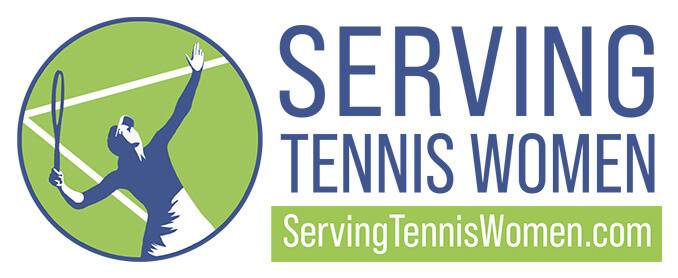What Drives Us
The Need: Over 10 million US women and girls play tennis every year. Tennis clubs supported women for generations, but today’s players need a different model. The science has changed, and our stressors are different. Women playing tennis live longer, have stronger immune systems, and experience lifelong brain plasticity. But we also face higher anxiety, self-doubt, and pain than men, and have more difficulties achieving personal health goals. We’ve seen a staggering 33% increase in women playing tennis since 2020, paired with 33-90% increases in individual communities of color. Growth is fantastic, but women need support to stay engaged. There is no national women’s tennis support organization. STW wants to fix that.
Background: STW was created by women in midlife, the age we’ve been informed our bodies begin to decay. And so what drives women in midlife to tennis? Midlife opens opportunities to reflect on our past and redirect our futures. Given its intense physicality, picking up tennis midlife is a highly unexpected choice, and yet, we do it. The “paradox of declining female happiness” describes how globally women are less happy than men and less happy today than in the 1970s, even with increases in women’s rights. At STW, we believe that this psychological experience drives tennis participation, especially in midlife.
Dr. Alexis Chiang Colvin, the US Open Chief Medical Officer and Women’s Tennis Association Board Member, found playing tennis facilitates happiness as well as increased physical, mental, and social health. Importantly, she identified the greatest benefits were for those playing frequently and at more advanced skill levels. This is the functional gap. In order to develop tennis-curious women into happy, healthy lifelong-players, we need structured education, advocacy, mentorship, and partnerships.
Women generate power throughout our lifetimes, and, today, our narrative is changing in real time. As moms battle it out in WTA tournament finals. As pregnancy is celebrated for professional players. As post-menopausal women strengthen their bones. At STW, we fight the notion of decline and strive to build new narratives on femininity, empowerment, happiness, and aging. We believe creating new in-person and virtual models of tennis access will impact the lives of millions of women around the world.
Mission: To energize women’s sport and rise to the next level of play by
-
- empowering mental strength and physical health,
- nurturing diverse new players through mentorship
- facilitating positive competition,
- creating meaningful video content,
- building friendships and having fun.
Action Plan: STW is a community-based responsive grassroots organization that believes women need support to be successful long-term in tennis and that indivduals within communities best know how to facilitate success. Through a hub-and-spoke model, we aim to partner with local champions providing high-quality affordable content to women and allies around the country through free web-based content; expert guidance on techniques, health and wellness; increased access to tennis gear; and local mentorship.
Diversity Statement: Tennis was historically elitist, but STW was created by community-based players, in many ways defining both who we are and who we aspire to be. Playing on recreational courts, we’ve even been called “uncivilized” and take it as a compliment. We believe that strength comes from diversity, and that access builds community. We recognize tennis’ role in challenging gender stereotypes and support all LGBTQIA+ players into STW. We are open to all racquet and paddle players of all adaptive abilities. We strive to welcome everyone identifying with our mission, regardless of age, fitness, or experience level.
References:
- Ben Dori, S., & Kemp, A. (2020). Undoing age, redefining gender, and negotiating time: Embodied experiences of midlife women in endurance sports.Time & Society, 29(4), 1104-1127.
- Maher, A. (2018). Tennis makes you happy and healthy, Study shows. USTA. Retrieved from: https://www.usta.com/en/home/stay-current/national/tennis-makes-you-happier-and-healthier–study-shows.html
- Mattioli, A. V., Coppi, F., Nasi, M., & Gallina, S. (2022). Stress and cardiovascular risk burden after the pandemic: current status and future prospects. Expert Review of Cardiovascular Therapy, 20(7), 507-513.
- Seens, H., Modarresi, S., Fraser, J., MacDermid, J. C., Walton, D. M., & Grewal, R. (2021). The role of sex and gender in the changing levels of anxiety and depression during the COVID-19 pandemic: A cross-sectional study. Women’s Health, 17, 1-9
- Stevenson, B., & Wolfers, J. (2009). The paradox of declining female happiness. American Economic Journal: Economic Policy, 1(2), 190-225.Tishelman. J., Bu, D., Gladsonte, J., & Colvin, A. (2020). Improved General Health Outcomes in US Recreational Tennis Players, Journal of Medicine & Science in Tennis, July, 20-30.
- Associated Press. (2023). US sees rise in Hispanic, Black, Asian tennis players. Washington Post. Retrieved from: https://www.washingtonpost.com/sports/tennis/tennis-participation-hispanic-black-asian/2023/03/02/20b4b1ea-b940-11ed-b0df-8ca14de679ad_story.html
